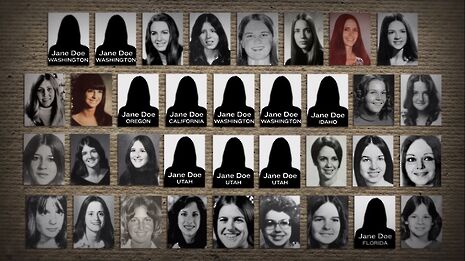Women should not be sidelined in public and popular discourse about violent men
In creating media about violent men, the tragedy of the real victims is elided

Content note: this article contains reference to sexual assault, murder, and violence against women.
Following the #MeToo movement that has shaken the film industry in the last few years, 2019 appeared to be a promising year for Hollywood. Yet the release of Extremely Wicked, Shockingly Evil, and Vile (the Ted Bundy biographical thriller) reveals that there is still a long way to go both for Hollywood and society generally. The way that the film reproduces the glorification of Bundy that was so concerning at the time of his trial highlights the similarities between the treatment of Bundy and men on trial today, revealing an alarming lack of progress.
The fact that a film has been produced to profit from the story of a man famous for murdering at least thirty girls and young women is questionable at best. Victims and their family members are thrown back into the spotlight, whether they wish it or not. In addition, Bundy is played by High School Musical’s Zac Efron, the heart-throb whose previous roles as the good-looking protagonist automatically present Bundy as gorgeous and misunderstood before Efron has spoken a word. Apparently not enough was taken from Bundy’s victims at the time: forty years on, Hollywood has stripped them of their agency and dedicated a film to the memory of their killer.
“He was not particularly clever, especially charming or unusually good looking and to present him as such is an insult to the women he killed”
The film focuses on Bundy with an exploration of the relationship between him and his girlfriend Elizabeth Kloepfer, played by Lily Collins. The women he killed are relegated to markers along the road of Bundy’s character development. The emphasis placed on his charm, looks and wit ’glorify him’, in the words of Kathy Kleiner Rubin, a surviving victim, presenting him as irresistible and almost unstoppable. These are titles he does not deserve. Bundy was a serial rapist, murderer and necrophile, one of America’s most notorious killers. He was not particularly clever, especially charming or unusually good looking and to present him as such is an insult to the women he killed. They were not victims of his ‘charm’ or ‘looks’. Two of his victims were simply asleep in their dorm rooms, another was a twelve year old girl waiting outside school, one was a lone hitchhiker and many more were simply kind-hearted young women, happy to lend a struggling stranger with a ‘broken arm’ a hand.
The memory of these women and their plight is firmly secondary within the film to the focus on Bundy. Although this is concerning, it is no surprise. The film merely perpetuates the tone of Bundy’s trial, in which the women he hurt were subordinated. Indeed, the judge who sentenced Bundy to death took a moment to mourn, not for the victims, but for Bundy’s wasted law school-educated potential. Judge Cowart, who presided over a case in which two sorority students were sexually assaulted and murdered while asleep in their dorms, and two others were left with lifelong injuries, said ”You’d have made a good lawyer and I would have loved to have you practice in front of me, but you went another way, partner [...] Take care of yourself. I don’t feel any animosity toward you. I want you to know that.” What is more, such views were espoused nationally in America. Men and women flocked to his trial, many of them adamant that he was innocent in spite of overwhelming evidence to the contrary.
“Be outraged, feel ‘animosity’, and above all, do not be complacent”
It is here that the picture becomes increasingly bleak. An examination of attitudes to Bundy during his trial are not dissimilar to modern views. Ultimately, those who refused to believe that Bundy was guilty during his trial are the same kind of people who stand by the likes of Brett Kavanaugh and believe that because the accused is white and educated, he must be innocent. They believe this in the face of clear evidence, but, most damagingly, they believe it at the expense of the women affected.
We have seen this time and time again. We saw it at the Kavanaugh case when Dr. Ford was forced to relive her rape before international scrutiny while facing daily death threats. The fact she came forward at great personal cost, with little personal motive, was dismissed because Kavanaugh is educated, white and powerful. Like President Trump facing rape allegations, he got a free pass. We saw it when Brock Turner was found guilty of sexually assaulting an unconscious woman, and yet got only six months jail time, of which he only served three. We saw it when Jacob Anderson, a fraternity president, was indicted by the jury on four counts of sexual assault but got off with a $400 fine, no jail time and the prospect of no record. The judge emailed the victim saying that ’our jurors are not ready to blame rapists and not victims when there isn’t concrete proof of more than one victim’. Undeniably, male potential is prioritised over female well-being.
It should not be acceptable to produce a film about Bundy which presents him as more a misunderstood young man than cold-hearted serial killer. It is an insult to the memory of his victims. Forty years on, it should be unacceptable to attest to the innocence or ignorance of educated white men guilty of hurting women, in the face of overwhelming evidence. And it should be unacceptable to feel no animosity towards these men on behalf of their victims. Yet, somehow it still is. So I urge you: be outraged, feel ‘animosity’, and above all, do not be complacent.
 Interviews / You don’t need to peak at Cambridge, says Robin Harding31 December 2025
Interviews / You don’t need to peak at Cambridge, says Robin Harding31 December 2025 Comment / What happened to men at Cambridge?31 December 2025
Comment / What happened to men at Cambridge?31 December 2025 News / Unions protest handling of redundancies at Epidemiology Unit30 December 2025
News / Unions protest handling of redundancies at Epidemiology Unit30 December 2025 Features / ‘Treated like we’re incompetent’: ents officers on college micromanagement30 December 2025
Features / ‘Treated like we’re incompetent’: ents officers on college micromanagement30 December 2025 News / Varsity’s biggest stories of 202531 December 2025
News / Varsity’s biggest stories of 202531 December 2025










